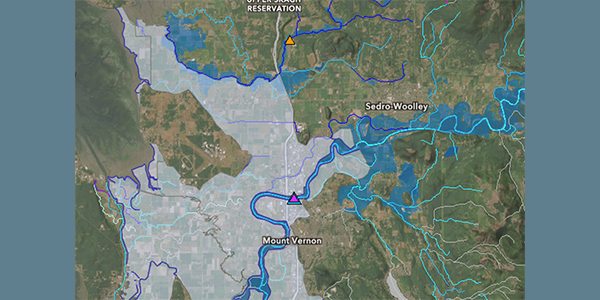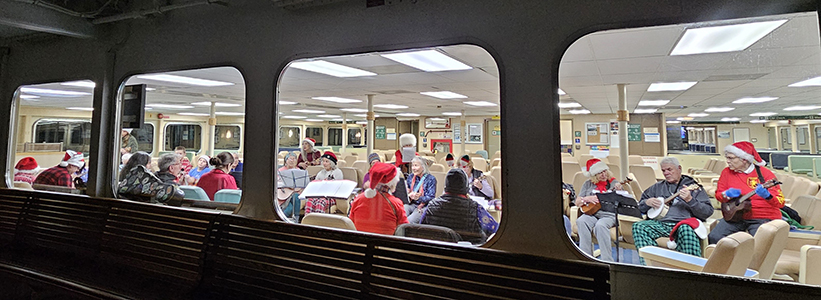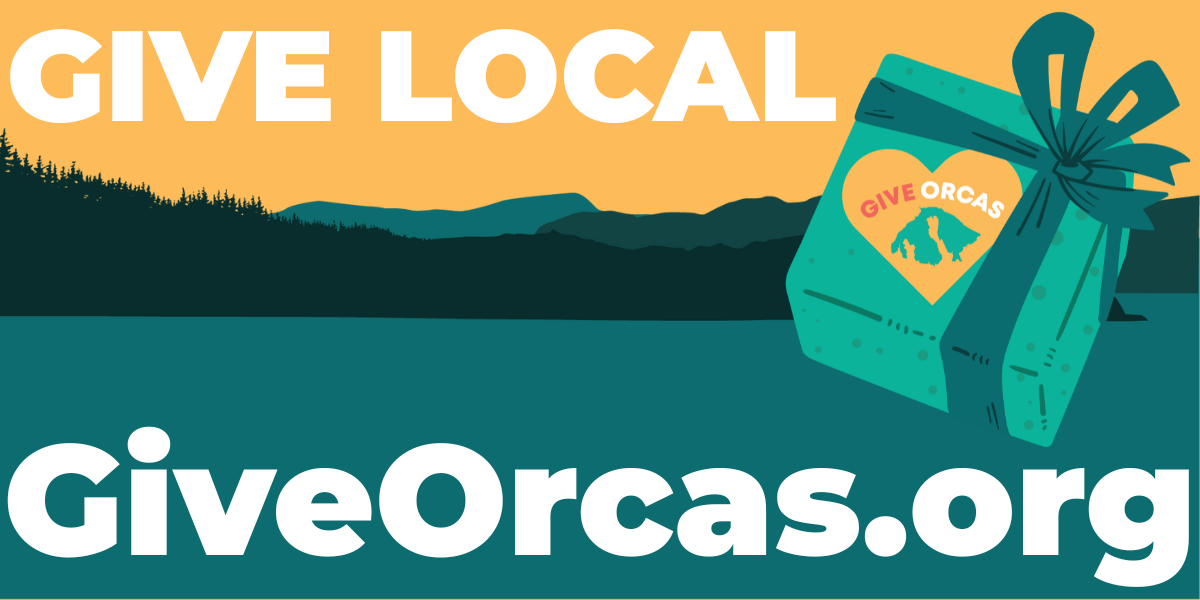“We have a decision to make on Aug. 11 as to whether or not the council is going to propose bringing a tax measure before the public” said County Council Member Richard Fralick at the Town Hall held last night. He called the meeting “a brainstorming session, if you will.”
And Orcas Islanders responded in probing, passionate and articulate discussion among a standing room only gathering at the Eastsound Fire Hall.
Presentations by County Auditor Milene Henley, Council members Richard Fralick and Gene Knapp were followed by comments and questions from the audience.
Most of the two-hour meeting was spent on two controversial topics: the proposed property tax increase, which must meet voter approval before it is passed; and the Critical Areas Ordinance – upland portion update, which is slated to go before the Planning Commission and the County Council this fall.
Property Tax Increase – Levy Lid Lift
Early on in the meeting Fralick clarified that the terms “Levy Lid Lift” and “Property Tax Increase” were interchangeable.
Henley reviewed the current expense, or general county budget, which is “driving the consideration of the levy lift,” she said.
The general fund supports the general services of county government, which she broke down into administrative, law and justice, and community service departments.
While 2008 was the year for the largest county general budget, county administrators realized that spending was growing faster than revenue. The 2009 budget was reduced about $750,000 from the previous year, and over 12 full-time equivalent (FTE) employees were cut. Those reductions were in the Elections, County Fair, County Administration, Country Parks, Treasurer’s and Health and Community Services Departments.
Yet [intlink id=”final-county-budget-vote-this-tuesday-cash-balance-projected-to-fall-short-of-15-million-mark” type=”post”]Henley warned early on[/intlink] that the county would likely see a million-dollar shortfall in 2009.
Henley explained that property taxes are the largest source of revenue for the general fund. Not just because of the weakened economy but also because I-747, passed by state voters, limited growth of property tax revenue at 1 percent plus new construction taxes, the county faces continued budget declines.
Now, the shortfall has resulted in two phases of cuts to the current year budget: the first phase was approved by the County in June, when 12.3 FTEs were laid off; the second phase, of about $100,000 is expected to be approved by the Council on August 11.
Further, in planning for 2010, and assuming 5 percent increase in costs to payroll, which comprises 72% of the general budget, a deficit of $720,000 is foreseen. A 1.73 revenue increase was originally predicted for 2010, but Henley said the County Treasurer is now projecting less, with retail off.
“There’s not a lot more to cut,” said Henley. For the long-term, further cuts will result in collapse of the systems set up to run the county government: “Eventually the printer will break and we’ll run out of paper.”
“Now only the non-mandated services that the county is not required to provide can be cut, Henley said. That applies to cuts in:
- All non-grant funded Senior Services;
- All Washington State Extension programs (4-H, Master Gardeners, Master Livestockers, BeachWatchers) except the Extension agent and a half-time assistant;
- The Sheriff’s work crew supervisor;
- All General Fund support for County Parks, the County Fair and the Department of Emergency Management.
This scenario is described as the “Baseline Budget.” The Levy Lid Lift, or the Property Tax Increase is proposed as the solution to this scenario. Nothing has yet been decided, Henley emphasized; an increase must be put to the voting public to approve or reject.
“It is going to be up to you, if more than 50 % say yes it will happen, if less than it won’t, plain and simple,” said Fralick.
But first the council must decide by Aug. 11 whether to propose a levy lift or tax increase on the ballot, and if one is proposed, to define its rate, duration and uses.
In addition, Henley advised the audience which packed the Eastsound Fire Hall, “The proposed language of the levy resolution will include the requirement to continue to spend the proportion of money raised this year on the community services the levy would rescue.”
An additional 10 to 15 cents per $1,000 of assessed property value is proposed in the tax hike. Currently the County’s property tax rate is 48.336 cents/$1000 assessed evaluation, according to Henley. The maximum amount a county can collect in property tax, dictated by state law, is $1.80.
If an additional 10 cents is approved, it would yield $800,000; if the amount increased is 15 cents, the yield would be $1,200,000. Increased cost of the hike to the owner of a $450,000 property owner would be $45 at the lower rate or $67.50 at the higher rate.
If the Council decides to go ahead and ask the voters to approve a hike, they must then proceed to decide whether to make it temporary or permanent. Fralick summarized the arguments for making the lift permanent, saying that with the growth of expenses, cost-of-living-allowances (COLAs) and inflation, the “problem is long-term, we’ll have to keep coming back.”
Making the argument for a temporary increase to last 5 or 6 years, Fralick said that in the current bad economic times such an increase could help the county recover, “and then we can re-assess in 5 or 6 years – it’s a way of voters coming back and giving us a report card.”
To complicate the property tax formulation, the law requires that if raised property values increases the collected tax revenue by more than 1% (excluding new construction) then the millage rate (or percentage of tax collected on assessed property) goes down.
(For example, in 1999 Orcas voters approved a $1.35 Fire District tax. In 2008, that rate was $.94; this year that rate is $.68 because of the increased Orcas Island property valuation last year).
When an audience member called out, “The rate has gone down but the bill has gone up,” County Administrator Pete Rose said, “If your assessed value went up 21%, you paid the same taxes in 2009 as in 2008.”
Rose and Fralick also spoke of the need for a rainy day fund. Fralick said, “It’s important that the county have a reserve fund policy in place.” The council is drafting an ordinance that establishes a reserve fund that includes operating cash, a budget stabilization or “rainy year” fund “so we don’t spend to the max,” during good years, and a capital reserve fund to make it through lean times.
Public Comment
Patty Miller asked if there had been any analysis of properties that have been taken off the tax rolls for conservation, and if any thought had been given towrards those properties making a contribution in some other way. Fralick responded that the original numbers of such an analysis were “not significant” and advised Miller that he would get the figures to Miller.
He said that her “valid concern… doesn’t address the fact that land is a limited quantity — it [conservation land] does affect the pool of land available and impacts the cost of land.”
Paul Kamin confirmed that the percentage to support programs is fixed in the proposed levy lift, and added that a temporary increase “would give voters the ability to reassess the apportionment.”
Several comments were met with applause from the audience. One speaker complimented the council for having “the courage and wisdom to talk about a rational solution… Our taxes low, our needs are high.”
Ralph Goochman said that his income was down 50%; his property assessment increased by 60% and his tax bill went up, while county agencies are “all working overtime to regulate property owners…The county needs to reduce services… and do a better job in planning for the longterm. We are trapped in a system that wants to force us to pay for lost county revenues.”
Cindy Carter referred to her property tax bill and said that while individual tax amounts may be small, “If you start adding it all up, for just a modest home you get $1,700 property taxes.”
Greg Ayres proposed that the county leave the budget alone and create a reserve fund. that “wouldn’t be locked into providing for all those services; “We have to make the judgment call and figure out what makes most sense to voters.”
Walt Corbin asked the public and county to consider “how much growth costs this county … if you’re going to urbanize your community, it’s going to cost you more… until we get back to the vision… of our comprehensive plan and have a rural county.” He said he was in favor of an increase “until the county stabilizes and figures out how they’re going to handle this growth.”
Hugh Hendrick thanked the council “for the hope you bring us in the recognition that we need a rainy day fund.” Hendrick said the traditional “legs” of our economy – the “rotation of retirees, construction and stock market” are no longer sustainable, and that incomes will continue to fall.
Bill Gincig opposed a tax increase, saying that low income island residents would be forced to move off island – “people … we can’t afford to lose.”
Straw poll ballots were circulated at the meeting, asking voters to weigh in on whether they’d support new property taxes, whether such an increase should be temporary or permanent, and if the increase should be 10 or 15 cents.
“The community’s voice is what will take effect,” Fralick said.
A report on the Critical Areas Ordinance portion of the Town Hall will be posted on Aug. 8.
**If you are reading theOrcasonian for free, thank your fellow islanders. If you would like to support theOrcasonian CLICK HERE to set your modestly-priced, voluntary subscription. Otherwise, no worries; we’re happy to share with you.**








I am not an accounting major but it seems odd that one year ago the county bought the property next to the ferry dock for $2,000,000 and now we’re in the hole for a similar amount. Sell it and use the proceeds to cover the shortfall. Seems pretty simple – it’s a matter of priorities. It’s easier to get voters to support tax increases to “maintain services” than for buying real estate. The Public Works facility on San Juan Island is another example of buying with no regards for economic reality.
I am not an accounting major but it seems odd that one year ago the county bought the property next to the ferry dock for $2,000,000 and now we’re in the hole for a similar amount. Sell it and use the proceeds to cover the shortfall. Seems pretty simple – it’s a matter of priorities. It’s easier to get voters to support tax increases to “maintain services” than for buying real estate. The Public Works facility on San Juan Island is another example of buying with no regards for economic reality.
August 8, 2009
Comments about Town Hall meeting Aug 6, 2009
I attended the Town hall meeting on Thursday August 6, where the first hour of the meeting dealt with ways to increase the shortfall of needed revenues by cutting services and increasing property taxes and the last hour dealt with ways of reducing the possibilities of increased revenues with some of the proposed provisions of the Critical Areas Ordinance and the vendor sign ordinance.
It seems to me that what is sorely lacking in this whole process and discussion are clearly defined goals of what we want our island to be now and for the future. Many of the committees and elected officials seem more focused on compliance, rather than what makes good policy and good sense to achieve the desired goals of the Community.
A few of many examples are:
The UGA is reduced in size, leaving a dense area of homes with failed septic systems outside the UGA. They are not required to be connected to the sewer system, presenting a possible source of contamination to wells and Eastsound?s drinking water.
The proposed 200? shoreline setback of the Critical Areas Ordinance affecting about every home already built along the shoreline, making them non compliant and a major lawsuit waiting to happen.
Any controlled growth in the UGA of Eastsound is just about eliminated in the proposed provisions of the CAO wetland restrictions.
Not everyone will agree on what our island should be, I believe most folks are here for the wonder and beauty of this magnificent place.
The last time I looked there were at least 32 County Boards, Commissions and Advisory Committees.
It might be a good idea to determine what the highest goals are for our Island and our Community, and take the necessary steps to achieve them. It will not be easy!
Carl Yurdin
Eastsound
August 8, 2009
Comments about Town Hall meeting Aug 6, 2009
I attended the Town hall meeting on Thursday August 6, where the first hour of the meeting dealt with ways to increase the shortfall of needed revenues by cutting services and increasing property taxes and the last hour dealt with ways of reducing the possibilities of increased revenues with some of the proposed provisions of the Critical Areas Ordinance and the vendor sign ordinance.
It seems to me that what is sorely lacking in this whole process and discussion are clearly defined goals of what we want our island to be now and for the future. Many of the committees and elected officials seem more focused on compliance, rather than what makes good policy and good sense to achieve the desired goals of the Community.
A few of many examples are:
The UGA is reduced in size, leaving a dense area of homes with failed septic systems outside the UGA. They are not required to be connected to the sewer system, presenting a possible source of contamination to wells and Eastsound’s drinking water.
The proposed 200’ shoreline setback of the Critical Areas Ordinance affecting about every home already built along the shoreline, making them non compliant and a major lawsuit waiting to happen.
Any controlled growth in the UGA of Eastsound is just about eliminated in the proposed provisions of the CAO wetland restrictions.
Not everyone will agree on what our island should be, I believe most folks are here for the wonder and beauty of this magnificent place.
The last time I looked there were at least 32 County Boards, Commissions and Advisory Committees.
It might be a good idea to determine what the highest goals are for our Island and our Community, and take the necessary steps to achieve them. It will not be easy!
Carl Yurdin
Eastsound